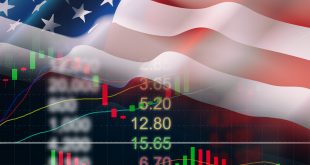The US Dollar held steady near 100.00, supported by a new US-UK trade agreement and robust economic data, despite lingering tariff concerns. The Federal Reserve’s recent decision to maintain rates at 4.25%-4.50% and global monetary policy shifts also shaped market dynamics, while upcoming US-China trade talks added to the mix. Equities rallied, and gold surged, reflecting a complex interplay of trade optimism and economic caution. This report explores the Dollar’s resilience, trade developments, and technical trends in a tariff-charged global landscape.
US-UK Trade Deal and Tariff Realities
A freshly announced US-UK trade deal, generating $6 billion in US revenue via a 10% tariff and $5 billion in export opportunities, bolstered the US Dollar, though enthusiasm waned as tariffs remained in place. The agreement, aligning the UK with US economic security goals, opens markets for American beef, ethanol, and machinery, and establishes an aluminum and steel trading zone. However, the 10% tariff on most UK imports tempered market reactions. The Pound Sterling rose modestly to 1.3300, up 0.15%, while the Dow Jones surged 1.6% to 41,113, reflecting broader trade optimism despite tariff constraints.
US-China Tariff Talks and Market Sentiment
Ahead of US-China trade discussions on May 10-11 in Switzerland, tariff tensions persisted, with China’s duties capped at 145%. The talks, led by US Treasury Secretary Scott Bessent and China’s Vice Premier He Lifeng, come as a July 9 deadline looms for a US tariff review, with few new trade deals finalized. Markets tempered expectations for breakthroughs, though improved risk sentiment lifted equities, with the S&P 500 up 0.2% to 5,617. Gold rose to $3,400, driven by trade uncertainty and central bank buying, while Asian currencies held firm, with nations like Singapore and Malaysia strengthening FX to ease US trade frictions.
Fed’s Stance and Global Monetary Shifts
The Federal Reserve’s decision to hold rates steady, citing inflation at 2.6% and a solid labor market (April’s 177,000 Nonfarm Payrolls, 4.2% unemployment), supported the Dollar’s resilience. Chair Jerome Powell’s upcoming remarks are expected to highlight tariff-driven inflation risks (April’s Prices Paid Index at 65.1), with markets pricing in a 62% chance of a July rate cut. The Bank of England’s 25-basis-point cut to 4.25% widened the US-UK rate gap, boosting USD demand. US jobless claims fell to 228,000, beating forecasts, while 10-year Treasury yields held at 4.345%, ahead of a $39 billion auction and next week’s Fed communications.
Technical Outlook for the US Dollar
The US Dollar Index (DXY) traded near 100.00, up 0.25%, but struggled to break resistance at 100.23. The Relative Strength Index (RSI) at 45 and Average Directional Index at 48 signal neutral momentum, while the Moving Average Convergence Divergence (MACD) suggests a buy. The 20-day Simple Moving Average (SMA) at 99.64 offers support, but the 100-day (105.17) and 200-day (104.33) SMAs indicate longer-term bearish pressure. Key resistance levels stand at 100.23, 100.86, and 100.91, with support at 99.83, 99.81, and 99.67. The Dollar’s path hinges on trade talk outcomes and Fed signals.

 Noor Trends News, Technical Analysis, Educational Tools and Recommendations
Noor Trends News, Technical Analysis, Educational Tools and Recommendations




